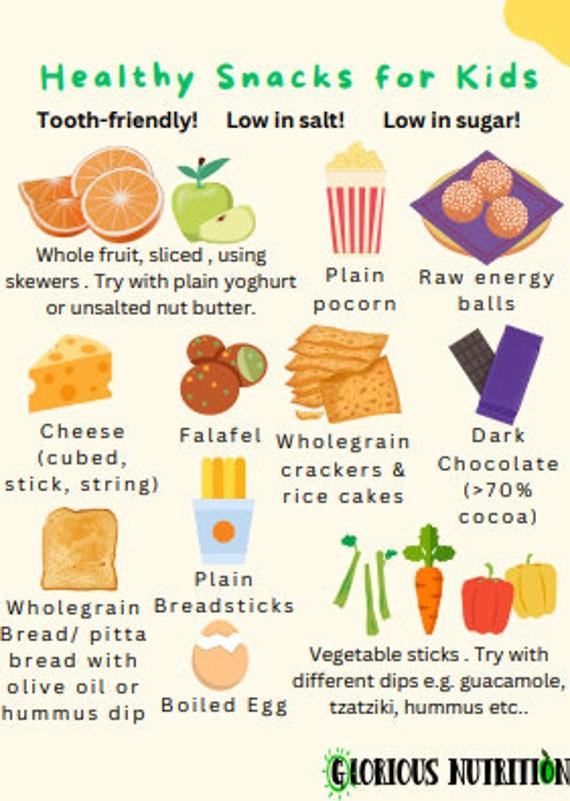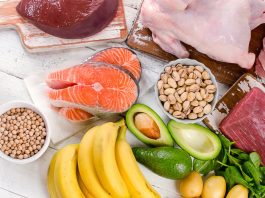Embarking on a weight loss journey is a personal and often challenging experience, filled with both triumphs and hurdles. One of the key aspects of this journey is making mindful dietary choices, and snacks play a pivotal role in keeping your energy levels steady and your cravings at bay. However, with the abundance of snack options available, choosing ones that align with your weight loss goals can be daunting. In this guide, we aim to provide you with practical, empathetic advice on selecting healthy snacks that not only satisfy your taste buds but also support your path to a healthier you. Whether you’re a busy professional, a parent on the go, or simply someone striving for better health, understanding how to make informed snack choices can make all the difference. Let’s explore how you can nourish your body and achieve your goals without sacrificing flavor or satisfaction.
Understanding Nutritional Labels and Ingredients
To make informed choices when selecting snacks for weight loss, it’s essential to delve into the world of nutritional labels and ingredients. Understanding these labels can empower you to select snacks that not only satisfy your cravings but also support your health goals. When examining a snack’s label, focus on the serving size and the number of servings per package. Many times, what seems like a single serving might actually be two or more, potentially doubling your calorie intake without realizing it.
- Calories: Aim for snacks that are between 100-200 calories per serving to keep your energy intake in check.
- Fiber: Look for at least 3 grams of fiber per serving to help keep you feeling full longer.
- Protein: Choose snacks with 5 grams or more of protein to support muscle maintenance and hunger control.
Equally important is understanding the ingredients list. Ingredients are listed in descending order by weight, meaning the first few ingredients make up the bulk of the product. Aim for snacks with whole food ingredients and minimal added sugars or artificial additives. Here’s a quick reference table to guide your choices:
| Ingredient to Look For | Why It’s Beneficial |
|---|---|
| Whole Grains | Rich in fiber, supporting digestion and fullness. |
| Nuts and Seeds | Provide healthy fats and proteins. |
| Fruits | Naturally sweet and full of vitamins. |

Portion Control and Mindful Eating Practices
Embracing portion control and mindful eating can significantly enhance your journey toward weight loss. By paying attention to what and how much you eat, you can enjoy your favorite snacks without guilt. Here are some practical tips to get you started:
- Listen to Your Hunger Cues: Before reaching for a snack, pause and ask yourself if you are genuinely hungry or if you’re eating out of boredom or stress.
- Savor Each Bite: Eat slowly and relish each mouthful. This helps in recognizing when you are satisfied and prevents overeating.
- Use Smaller Plates or Bowls: This simple trick can help you eat less while still feeling satisfied.
To make it easier, here’s a quick reference table for portion sizes of common healthy snacks:
| Snack | Recommended Portion |
|---|---|
| Almonds | 1 ounce (about 23 almonds) |
| Greek Yogurt | 3/4 cup |
| Carrot Sticks | 1 cup |
| Apple Slices | 1 medium apple |
Remember, the goal is to enjoy your snacks while being mindful of their impact on your overall dietary goals. By incorporating these practices, you not only manage your portions but also develop a healthier relationship with food.

Balancing Macronutrients for Sustained Energy
When it comes to selecting snacks that not only support weight loss but also keep you energized throughout the day, it’s crucial to focus on balancing macronutrients. Proteins, fats, and carbohydrates each play a vital role in maintaining your energy levels and overall well-being. By understanding how to combine these nutrients effectively, you can create snacks that satisfy your hunger and boost your metabolism.
- Proteins: Incorporate lean proteins like nuts, seeds, or Greek yogurt to repair tissues and maintain muscle mass.
- Healthy Fats: Opt for sources like avocados, olive oil, or nut butters to provide long-lasting energy and support brain function.
- Complex Carbohydrates: Choose whole grains, fruits, and vegetables for a steady release of energy, avoiding spikes in blood sugar levels.
Here’s a quick guide to help you visualize the macronutrient composition of a balanced snack:
| Snack | Proteins (g) | Fats (g) | Carbs (g) |
|---|---|---|---|
| Apple with Almond Butter | 4 | 9 | 25 |
| Hummus with Carrot Sticks | 3 | 6 | 16 |
| Greek Yogurt with Berries | 10 | 0 | 18 |
Remember, the key to sustainable energy and effective weight loss is to maintain a balance. By thoughtfully combining these macronutrients in your snacks, you can enjoy delicious, satisfying options that fuel your body and support your health goals.

Choosing Whole Foods Over Processed Options
When aiming for weight loss, making the switch to whole foods can be transformative. Whole foods are nutrient-dense and free from unnecessary additives that are often found in processed snacks. Choosing these options helps you feel fuller for longer, which can naturally reduce calorie intake without leaving you feeling deprived.
Consider incorporating the following whole food snacks into your routine:
- Fresh Fruits: Apples, berries, and oranges are not only delicious but also rich in fiber and vitamins.
- Vegetable Sticks: Carrots, cucumbers, and bell peppers paired with hummus make for a crunchy, satisfying snack.
- Nuts and Seeds: Almonds, walnuts, and chia seeds provide healthy fats and proteins, essential for sustained energy.
| Whole Food | Benefits |
|---|---|
| Quinoa | High in protein and fiber, keeps you full longer. |
| Avocado | Rich in healthy fats, supports heart health. |
| Greek Yogurt | Contains probiotics, aids digestion. |




